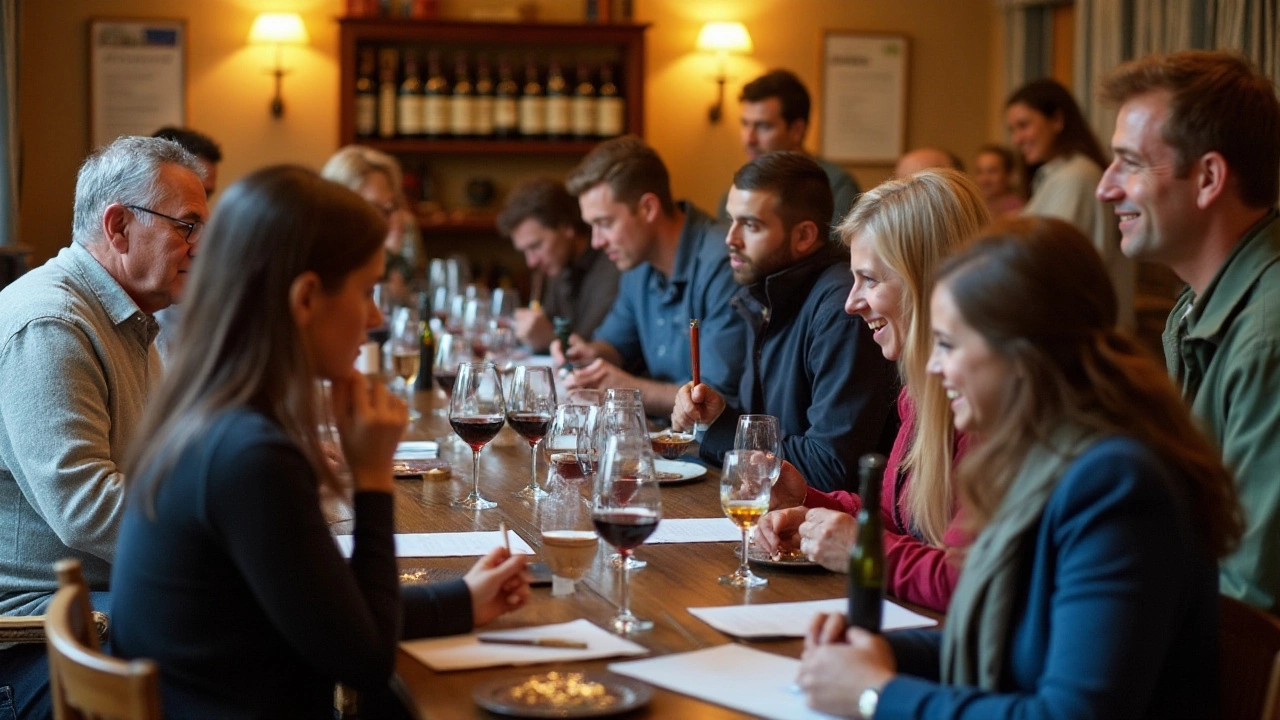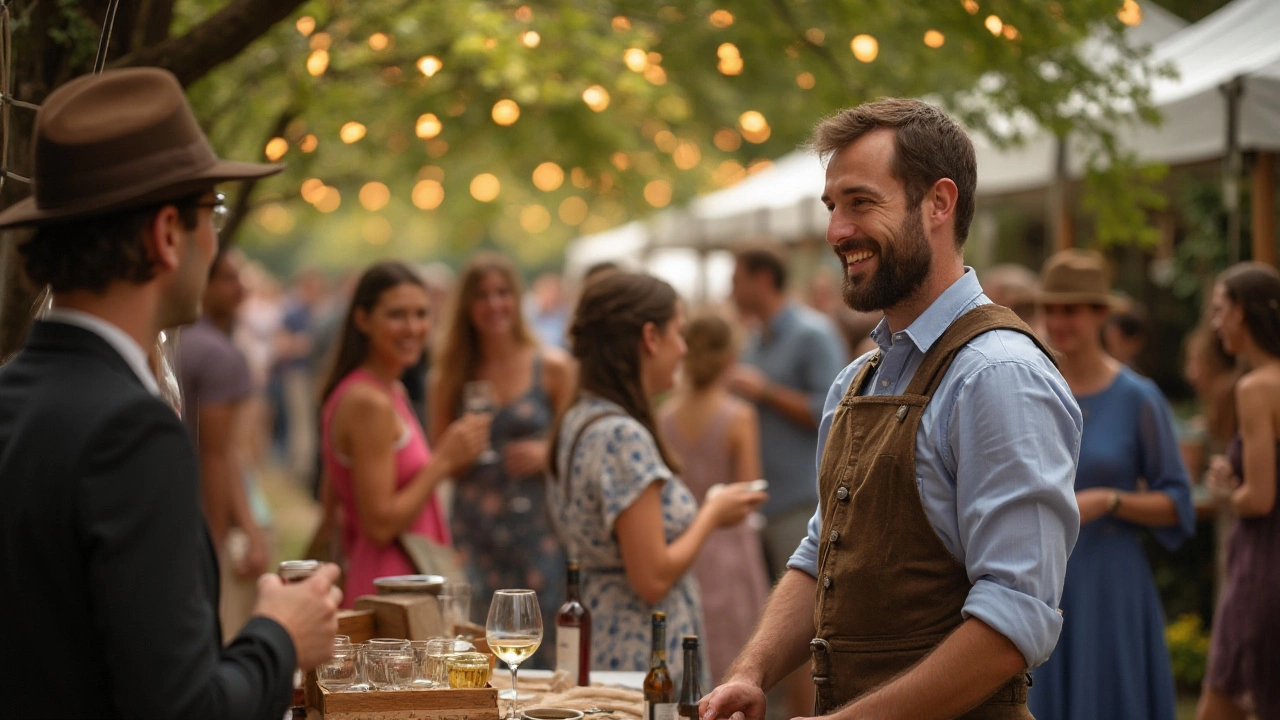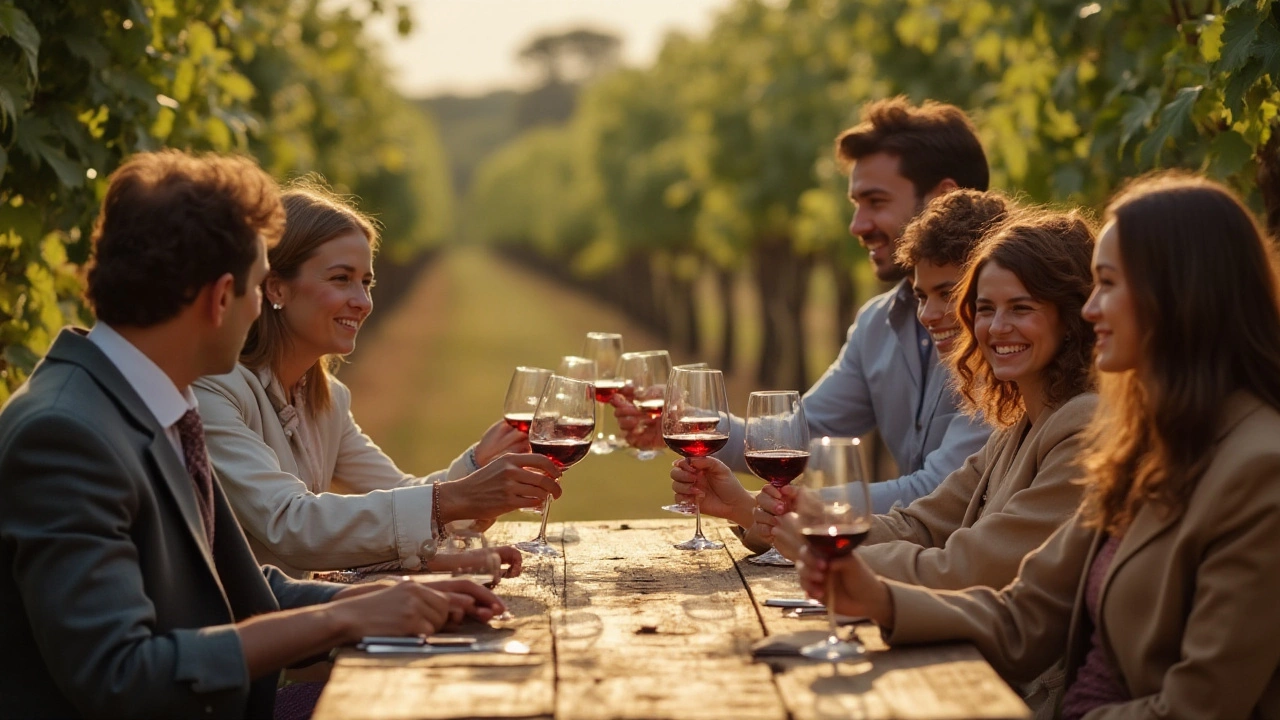Stepping into a wine tasting room can often feel like entering a new, mysterious world, rich with smells, tastes, and unspoken rules. One puzzle many people face is knowing just how much to tip during this experience, as it can significantly enhance the courtesy and service you receive. While some wine enthusiasts focus solely on the taste and quality of the wine, the etiquette of tipping holds its own importance and may vary based on the location and context of the tasting.
In places like Napa Valley or Bordeaux, tipping can be a small gesture that resonates greatly with your sommeliers and servers, showing gratitude and respect for their expertise. The amount often depends on the scale of the venue, the service you receive, and sometimes even the size of your group. Understanding these tipping traditions not only fosters better relations but also enriches your adventure into the wine enthusiasts’ realm. So, let’s delve into the delicate balance of flavor and etiquette to help you navigate the delightful world of wine tastings.
Understanding Wine Tasting Norms
Wine tasting isn't just about sipping and savoring; it carries with it a cultural richness that demands a certain decorum. For those dipping their toes into this sophisticated world, understanding the norms can greatly enhance their experience. First and foremost, learning to interpret what's offered is key. Most tastings begin with subtle, lighter wines, gradually building up to those that have a more robust taste. This allows your palate to gently acclimate, setting the stage for a more dynamic array of flavors. It's a strategic approach that mirrors many traditions, much like a multi-course meal prepared by a skilled chef.
When embarking on a wine tasting journey, remember that the role of the sommelier is integral. They're not just there to serve but to educate and guide you through the experience. Like a conductor leading an orchestra, their insights can seem to unlock a deeper appreciation and understanding of each sip. Many times, they will share anecdotes or historical facts about the wines or the vineyard, enhancing your connection to what you're consuming. The knowledge that sommeliers provide can be invaluable, whether you're a novice just starting or a seasoned visitor exploring new nuances.
A respected sommelier once shared, "The marriage of wine and the right atmosphere elevates an ordinary tasting into an extraordinary experience." This sentiment captures the essence of why these norms exist—they're about more than etiquette; they're about intensifying your overall experience.
One intriguing aspect of wine tastings is the unspoken rules about how to hold the wine glass. It's customary to grip the stem, not the bowl, to avoid warming the wine with your hand. Small gestures like this contribute to the enjoyment of the tasting process, as they can subtly affect the wine's characteristics and your perception. Seasoned tasters might even adopt a certain posture and stance that allows for optimal focus on aroma and taste. This attention to detail is a hallmark of respect for the wine, the vineyard, and the people who create the magic in the bottle.
It's equally important to be aware of the lighter moments during a tasting. Laughter and conversation are as welcome as they are encouraged. Still, it's crucial to balance reverence for the craftsmanship with delight in the moment. Many find that striking this balance is the secret to fostering memorable experiences in wine country. Additionally, tastings can vary significantly in formality, so adapt your behavior to suit the environment. Whether you're at a vineyard under the open sky or a high-end urban tasting room, gauging the atmosphere is a skill worth cultivating.

The Role of Tipping
At first glance, the idea of tipping at wine tastings might seem unnecessary, but beneath the surface bubbles an intricate dance of appreciation, etiquette, and acknowledgment of expertise. Tipping plays a crucial part in the wine experience by bridging the bond between the taster and the one guiding you through this olfactory and gustatory adventure. Importantly, it represents a heartfelt "thank you" for the knowledge, service, and hospitality provided by sommeliers or tasting room staff, whose roles are largely service-oriented and often not lavishly compensated in terms of salary alone.
For those unfamiliar with the nuances of the wine industry, it’s important to note that in many cases, the individuals serving you aren't just offering wine for you to taste; they are presenting a narrative. They share the stories of each grape, vineyard, and bottle, enhancing the sensory experience with history and culture. As you taste, they engage, explaining the layers of flavor you might encounter and suggesting pairings that elevate the taste. This level of attention and detail warrants recognition, often expressed through tipping. According to a survey by the American Association of Wine Economists, about 60% of wine tasters believe tipping is essential for expressing gratitude.
"A sommelier doesn't just pour wine; we weave a mindful moment in the context of wine's history, region, and culture," says Elise Tyler, a renowned sommelier from Napa Valley.
You might be wondering about the ideal amount to tip. While there’s no hard-and-fast rule applicable across all wine regions, a common practice in the United States is to tip anywhere from $5 to $20 depending on the service and the perceived value of the tasting experience. In some renowned wine regions like California's Sonoma County or France's Bordeaux, tipping tends to lean towards the higher end due to premium service. Suggestions include tipping based on the size of the group, the length of the tasting, and the exclusivity of the wines provided in your session.
Different environments can shift the norms for tipping too. Small, family-run wineries might appreciate a tip even more, as they may not charge a fee for tastings like larger commercial counterparts often do. Urban tasting rooms, which might see higher volume traffic, may have different customs you should inquire about before your visit. Exploring vineyards worldwide also reveals cultural differences in tipping etiquette, where some countries might not expect a tip at all. Ensuring your gratuity aligns with local practices adds another layer of grace to your wine-tasting journey.
To enhance your experience, it's wise to check ahead and see if tipping via credit card is an option or if cash is preferred. This not only helps the winery staff but also prepares you accordingly. Apart from the traditional tip, some wine enthusiasts opt to purchase a bottle or two from the tasting, which can serve as both a token of appreciation and a cherished souvenir of the experience. In this way, the role of tipping extends beyond mere monetary exchange, enriching both personal connections and the larger tapestry of wine culture.

Factors Influencing Tipping
The art of tipping at a wine tasting does not have a one-size-fits-all solution. Several factors play into how much one should tip, creating a spectrum of acceptable practices depending on the situation. Firstly, the notion of tipping is influenced significantly by regional norms. For instance, in regions renowned for their artisanal wine like Napa Valley or the French countryside, the tipping culture is often shaped by personal interactions where guests are tipping not just for the service but for the experience and knowledge shared by the vineyard staff. In such instances, a customary tip might range from $5 to $20, depending on the comprehensiveness of the service, the size of the group, and the level of personal attention received.
A well-known wine critic once mentioned, "When at a tasting room, showing appreciation to those who bring wine to life is as important as appreciating the wine itself."
Another factor to consider is the type of wine tasting event. Private tours or tastings, where individualized attention and expert guidance are provided, might warrant more generous tipping, reflecting the higher level of service and engagement. Group tours, while often more affordable, might reduce the intensity of personalized attention, thus influencing the amount you might feel compelled to give. An additional consideration is the list of wines sampled. If the tasting includes premium or rare wines, the gratitude shown through tipping may increase, reflecting the exclusivity of the offerings.
Service quality plays an undeniable role in tipping decisions. If a sommelier or server takes an extra step to accommodate your preferences or provides an informative and engaging experience, expressing your appreciation through tips becomes not just a polite gesture, but also an acknowledgement of their service. Establishments that charge a tasting fee don't necessarily expect tips; however, a small gratuity is often still appreciated as it reflects the overall experience and satisfaction with the additional insights or entertainment provided.
Educational Components and Tipping
Additionally, the educational aspect of a wine tasting can also impact tipping behavior. When guided tastings are peppered with knowledge about winemaking techniques, vineyard histories, and tasting notes, many enthusiasts find value in this added layer, prompting generous tipping. As wine education becomes increasingly central to tastings, guests may choose to tip with that consideration in mind. Remember, tipping is a subtle art reflective of personal gratitude rather than obligation, so while these factors help guide you, they should not overshadow the essence of your personal enjoyment and appreciation.
Wine Tipping Tips
Understanding how much to tip at a wine tasting can be a nuanced part of the experience, reflecting your appreciation for the winemakers and staff who guide you through the gloriously intricate world of wine. The generally accepted practice in the U.S. is that if there is a tasting fee, you are under no obligation to tip, although a small tip of $5 - $10 per person is a commendable gesture if the host provided extra insightful comments or personalized attention. In other parts of the world, particularly those that are bastions of traditional wine culture like Italy and France, tipping may not be customary, but leaving a couple of euros for exceptional service can leave a positive impression.
When it comes to tipping, considering the environment and context of the wine tasting is crucial. A high-end, exclusive estate might expect a different tipping standard compared to a more casual or emerging vineyard. The level of interaction also plays a significant role; if your sommelier offers a personal tour or in-depth explanation about the vineyard's history and wine-making processes, this added value makes a tip more warranted. On occasions, some wine tastings operate in a group setting, and pooling tips among your group can often simplify the process while adequately rewarding the service.
It's always beneficial to be cognizant of the specific customs of the region you're visiting. Locals appreciate when visitors acknowledge traditional practices. Some wineries explicitly discourage tipping, using any extra income to invest back into their facilities or towards social causes. Tipping expectations can change based on the local culture and your own experience during the tasting.
Wine tasting tipping doesn’t strictly adhere to a one-size-fits-all paradigm. Consider the uniqueness of your experience, the level of engagement from the staff, and the overall vibe of the tasting room. It's helpful to research ahead of time or even discreetly ask your host about tipping practices if you're unsure. Remember, tipping is primarily about showing appreciation more than it is a monetary transaction. If the enthusiasm and knowledge shared enrich your experience significantly, don't hesitate to express gratitude monetarily.
"At wine tastings, a tip is more than an acknowledgment of service—it's an expression of shared passion for the craft," says Emma Smith, a renowned international sommelier. "Every interaction between the taster and the staff is a piece of art, deserving its own small acknowledgment."
Let’s consider some specific scenarios where tipping might enhance the relationship with your hosts, reflecting on the role emotion plays in the wine experience. Whether it's tipping your tour guide who took you through the vineyard or rewarding a sommelier's eloquent and knowledgeable conversation about each wine's delicate bouquet, a thoughtful tip reinforces the notion that appreciation is not just about sipping a good glass but savoring every layer of the event. As you develop your journey through wine tasting locations around the globe, allow these experiences to guide your tipping practices, creating memories as rich and flavor-filled as the wines themselves.


